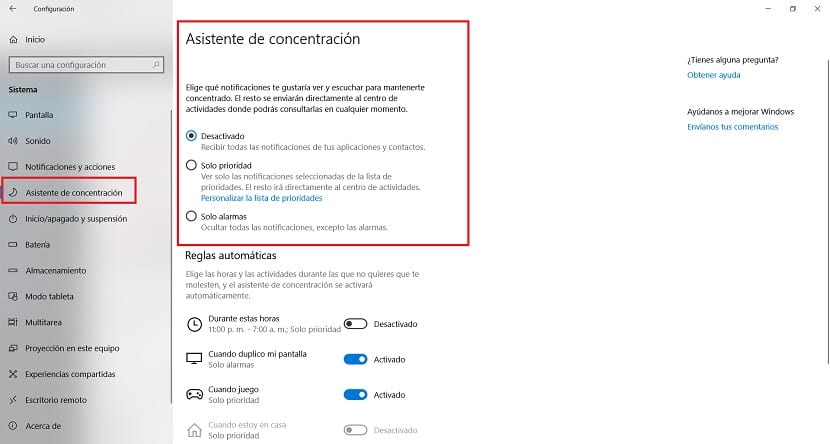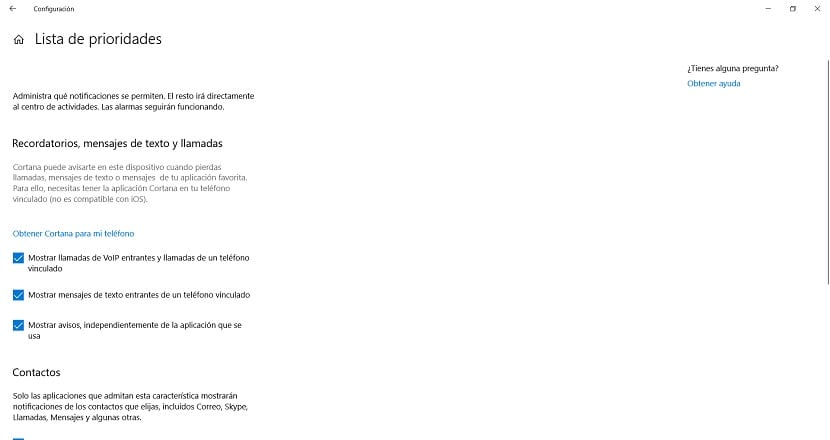
One of the characteristics that arrived last year on Windows 10 was the Concentration Assistant. It may not sound familiar to many of you. It is a tool with which to improve user productivity. Or to make sure that at work or just leisure time, we have fewer distractions. So during that time, we will not receive any annoying notification.
If you would like to make use of this Windows 10 Concentration Assistant, we show you below the steps to follow to be able to configure it in a simple way. Thus, for those users who do not know it, they can know a little more about this interesting function in the operating system.
The objective of it is Get rid of these annoying pop-up notifications, especially if you are working or if you want to enjoy a moment of leisure. For this reason, the Concentration Assistant allows us to establish a series of rules with which to decide when we are going to receive a notification and when not. So that we can have times when we are not going to have any.

This Concentration Assistant can even prevent us from receiving any notification for a specified period of time or even definitively, and configure only those notifications that we want to receive in Windows 10, because they are important. Therefore, it is a tool that can give us many uses.
Configure Concentration Wizard
As usual in this type of situation, we have to go first to the Windows 10 configuration. we have to enter the System section, which is usually the first one displayed on the screen. In the column that appears on the left of the screen, a series of options are shown. One of the options that appear in the column, or at least it should, is the Concentration Assistant.
We click on this option and the menu of this Concentration Assistant will then appear in the center of the screen. Here we go to be able to choose between three options in total, with which we can configure it to our liking in Windows 10. The options that appear on the screen are:

- Disabled: Concentration Assist is disabled by default in the system. Therefore, we will receive all the notifications of all the applications that are in Windows 10. Both the pop-up notifications and those that come out within the Activity Center.
- Priority only: In this case we will only see the notifications of applications that we have decided are priority. The others will not be displayed in a pop-up way, but will go out in the Activity Center. In this case, we have to select which applications have priority to show these notifications.
- Alarms only: All notifications that are displayed in Windows 10 in a pop-up way are disabled. In the case of wanting to be able to see them, we will have to resort to the Activity Center of the system. It is the most extreme mode, which leaves us free of any notification, as if it were a Do Not Disturb mode.
In the event that you choose the second option, it is necessary to have to determine which applications are going to have priority on Windows 10 so they keep showing notifications. This is something that each user will be able to determine individually. Since within this option, you see that there is a button that says Customize the priority list.

So you can choose if there are apps that will show these notifications on your computer. You can choose the ones you want, the ones you see are important, like Gmail or some mail app. You can also select contacts that have priority. This will depend on each user. Once configured, when you use this specific mode of the Windows 10 Concentration Assistant, you will only receive these notifications. The rest will only be displayed in the action center in the operating system. What do you think of this feature?